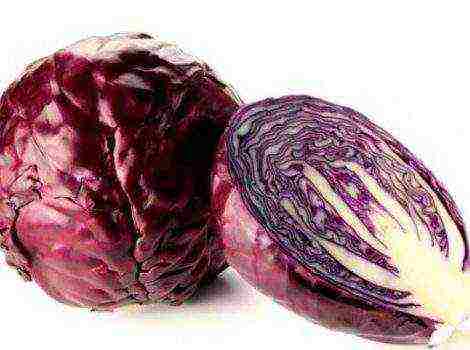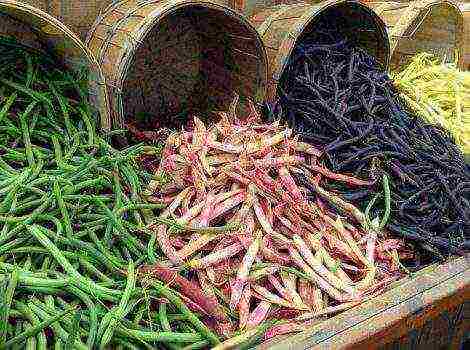Description of ways how to properly graft a melon on a pumpkin
Despite the emergence of varieties that are relatively resistant to cold temperatures and diseases, the cultivation of melons, watermelons, and cucumbers is not constant. A sharp cold snap, high humidity and the spread of fusarium lead to a decrease in yield, and sometimes even to the death of the plant. Grafting melons and other sensitive crops onto pumpkin can help prevent these problems.
Benefits of grafting melon, watermelon and cucumber on pumpkin
Plant resistance to unfavorable climates and diseases, survival rate and development rate depend on the root system. To improve these characteristics, melon, cucumber or watermelon is grafted into a stronger crop - pumpkin or squash.
A melon (scion) grafted onto a pumpkin (stock) can withstand a decrease in soil temperature to + 16 °, and a rooted plant feels depressed and slows down in development.
The pumpkin has a large number of small roots that intensively absorb moisture and nutrients from the soil. Therefore, a melon, cucumber or watermelon, grafted onto a pumpkin, develops faster, which accelerates the ripening of fruits by 10-12 days. This is important when growing melons, cucumbers and watermelons in regions with a short summer for culture: Siberia, the middle zone of the Russian Federation, in the Urals.
Pumpkin roots are less sensitive to moisture. Prolonged rains practically do not lead to decay of the root collar and the development of fusarium wilting.
- Watermelon grafted onto a pumpkin
- Melons grafted onto a pumpkin
- Cucumbers grafted onto a pumpkin
The varietal qualities of the fruits of the grafted melon do not change. Intensive nutrition and accelerated metabolism only increase the aroma and sweetness of the fruit. Due to the absence of growth retardation in cold weather, the fruits of the grafted melon are larger.
Ideal conditions
To calculate the time of grafting, they are guided by the time of plant transplantation into open ground. The soil should warm up to + 16 ° С, in the middle zone of the Russian Federation this occurs in the third decade of May, and in Siberia in the first decade of June. By the time of transplantation, the grafted plant must be 30-35 days old.
Seeds are sown in late April or early May. A large difference in the size of the stems of the scion and rootstock reduces the survival rate. Therefore, melon seeds are sown 3 days earlier, so that the seedlings are ahead of the pumpkin in development. The procedure is started when the first true leaves are formed on the seedlings.
At a later date, the plant will not have time to thoroughly take root by the time of transplantation into the ground. And long-term development at home leads to stretching and weakening of plants.
Technology and ways to instill
For grafting you will need: a sharp safety blade, non-woven or polyethylene bands for tying, grafting clips. Before the procedure, the instrument is disinfected with alcohol, one side is wrapped with electrical tape.
There are three main methods of grafting besides the splitting method. Home procedures guarantee only 70% -80% survival rate.
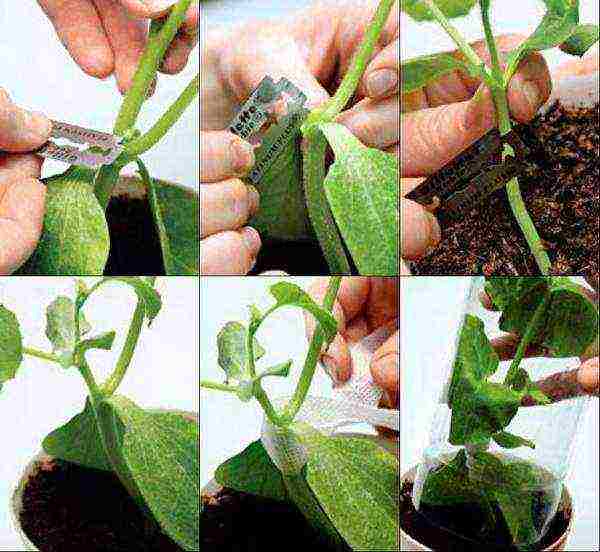
To the center of the pumpkin
Quite a complex procedure that requires some skill and knowledge of technology. If it is the first time, it is advisable to involve an assistant.
Stages:
- at the rootstock, the upper part is cut perpendicularly with the first leaf above the cotyledons;
- between the cotyledons in the center of the stem, a puncture is made with an awl to a depth of 1.5 cm;
- the scion is cut off at the soil level, peel off the skin from the bottom by 1.5 cm;
- the stem of the scion is inserted into the puncture hole for its entire length;
The tissues of the grafted plants must be in close contact. After that, the joint is tied with a tape and fixed with a clamp.
By the convergence of plants
This is a relatively simple procedure that a beginner can do well.
Stages:
- pumpkin and melon seeds are sown nearby;
- under the cotyledons, remove the thin skin (epidermis) of plant stems by 15-20 mm;
- plant tissues are tightly pressed against each other;
- tie and fasten with a clip.
There is a second version of the procedure. On the rootstock and scion, cuts (tongues) of the same size (1.5 cm) are made in opposite directions. The tongues are inserted into each other with a "lock" and fixed.
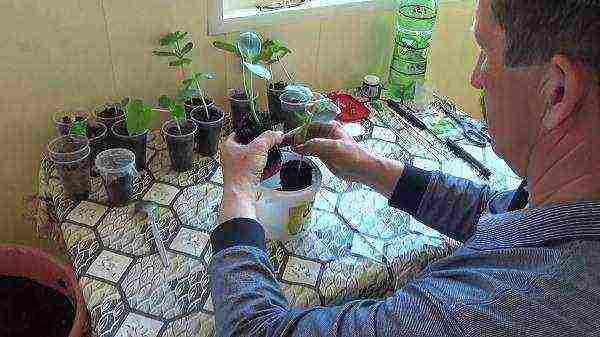
After 5 days, the stem of the scion below the graft is slightly crushed with your fingers. This procedure is carried out daily until the stem of the melon is dry. After 6-8 days, the stem of the pumpkin above the grafting is removed. The root of the scion is cut off during transplantation into the ground.
To the side of the stem
The growth point is removed from the rootstock so that only the first true leaf and cotyledon leaves remain. On its stem, a straight incision is made from top to bottom with a length of 1.5-2 cm. The depth of the cut should reach the middle of the stem.
The graft is cut from the soil. On both sides of the stem, from the side of the cotyledonous leaves, peel off the length of the rootstock cut. Slightly bending the stem of the rootstock, open the incision and insert the scion, achieving a snug fit of the tissues, tie it with a ribbon.
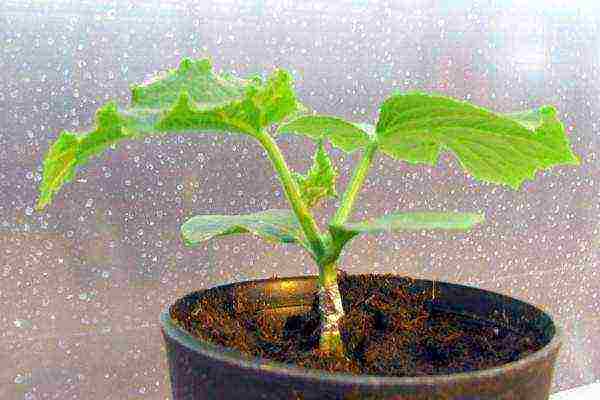
Care after the procedure
After the procedure, the soil surface is mulched with wet sawdust. Then they are covered with glass jars or plastic bottles with a cut bottom.
During the week, maintain a humidity level of 90-95% and t + 25 ° C. To do this, the containers are removed on a windowsill located above the battery and shaded from bright light. The inner walls of the bottle are sprayed daily with warm water.
The plants are ventilated by opening the surface of the pot daily for 1-2 minutes. Watered every day with warm and settled water, avoiding moisture at the site of vaccination.
After that, the ventilation is increased, and after 2-3 days the caps are removed.
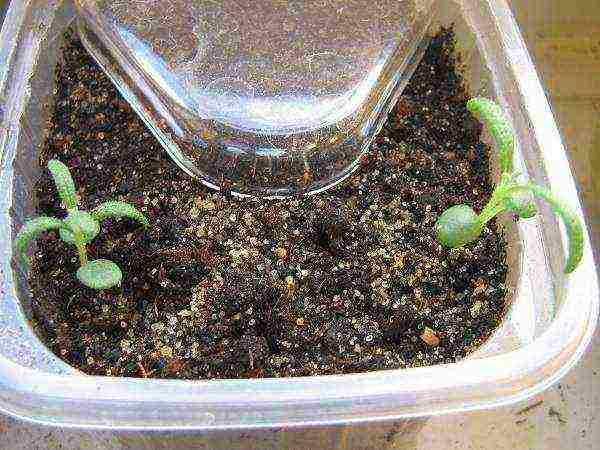
In the future, they maintain an average temperature of + 20 ° С- + 25 ° С during the day and about + 18 ° С at night. Water as the earthen coma dries. A few days before transplanting, the plants are fed with mineral fertilizers for seedlings and hardened by taking them out into the fresh air. After transplantation, they are looked after as a regular pumpkin.
Plants that are grafted for the first time take root hard and give a small yield. Therefore, it is unreasonable to immediately transfer all melon plantings to grafted plants. This is done gradually after gaining experience, finding the ideal rootstocks and scions.
